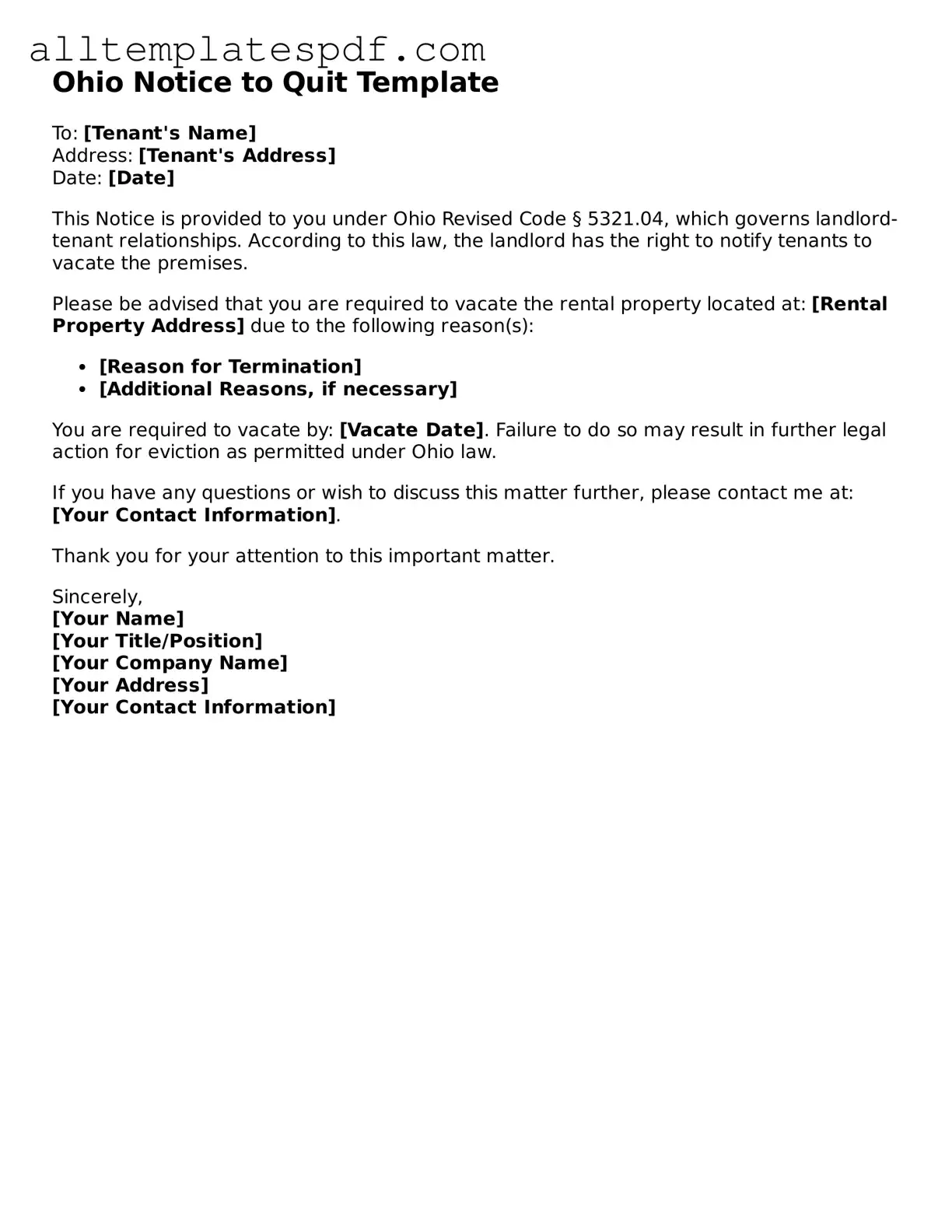Instructions on Utilizing Ohio Notice to Quit
Once you have the Ohio Notice to Quit form ready, you will need to complete it accurately to ensure proper notification. This form is essential for initiating the process of eviction. Follow these steps carefully to fill it out correctly.
- Begin by entering the date at the top of the form. This should be the date you are completing the notice.
- In the designated space, write the name of the tenant(s) who will receive the notice. Ensure that the names are spelled correctly.
- Next, provide the address of the rental property. Include the street address, city, state, and zip code.
- Clearly state the reason for the notice. This could be for non-payment of rent or violation of lease terms. Be specific and concise.
- Indicate the amount of rent owed, if applicable. Write the total amount in both numerical and written form to avoid confusion.
- Specify the time frame for the tenant to vacate the premises. This is typically 3 to 30 days, depending on the reason for the notice.
- Sign the form at the bottom. Include your name and title, if applicable, to validate the notice.
- Make a copy of the completed form for your records before delivering it to the tenant.
After filling out the form, it is important to deliver it to the tenant in a manner that complies with Ohio law. This can be done through personal delivery, certified mail, or posting it on the rental property. Ensure that you keep a record of how and when the notice was delivered.
